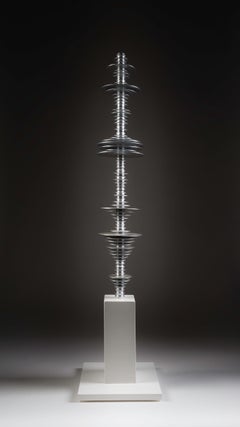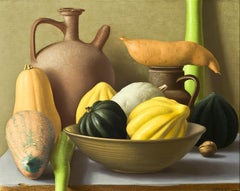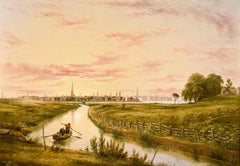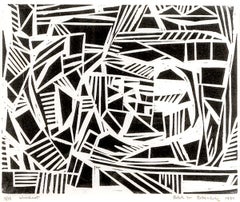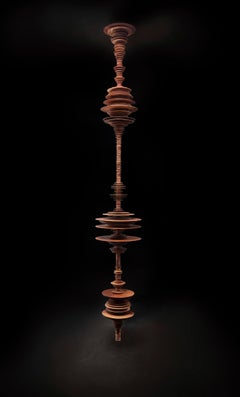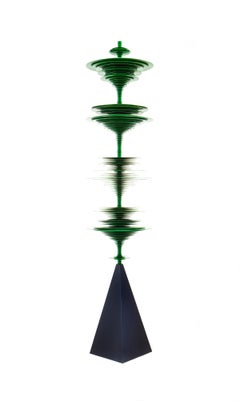Hirschl & Adler
2010s Contemporary Abstract Sculptures
Wood
Late 20th Century Contemporary Still-life Paintings
Linen, Oil
Mid-19th Century American Realist Landscape Paintings
Canvas, Oil
Mid-20th Century American Modern Abstract Prints
Woodcut
2010s Contemporary Abstract Sculptures
Wood
2010s Contemporary Abstract Sculptures
Metal
2010s Contemporary Abstract Sculptures
Metal
2010s Contemporary Abstract Sculptures
Bronze
Late 19th Century American Realist Still-life Paintings
Canvas, Oil
Early 2000s Contemporary Still-life Paintings
Canvas, Oil
Late 19th Century Interior Paintings
Oil, Wood Panel
21st Century and Contemporary Contemporary Landscape Paintings
Canvas, Oil
Late 20th Century American Modern Abstract Paintings
Enamel
Late 20th Century American Modern Abstract Paintings
Canvas, Acrylic
Late 20th Century American Modern Abstract Paintings
Canvas, Acrylic
Early 20th Century American Modern Animal Drawings and Watercolors
Paper, Color Pencil
19th Century American Realist Landscape Paintings
Canvas, Paper, Oil
Mid-20th Century American Modern Landscape Paintings
Tempera, Wood Panel
2010s Contemporary Portrait Paintings
Egg Tempera, Panel
2010s Contemporary Portrait Paintings
Linen, Oil
2010s Contemporary Portrait Paintings
Canvas, Charcoal, Oil
2010s Contemporary Portrait Paintings
Canvas, Charcoal, Oil
2010s Contemporary Portrait Paintings
Canvas, Acrylic Polymer, Oil, Acrylic
Mid-20th Century Abstract Abstract Sculptures
Steel
2010s Contemporary Landscape Paintings
Oil
2010s Contemporary Still-life Paintings
Oil
2010s Contemporary Still-life Paintings
Oil
2010s Contemporary Interior Paintings
Oil
2010s Contemporary Landscape Paintings
Canvas, Oil
Late 19th Century Figurative Paintings
Oil, Wood Panel
Late 19th Century Paintings
Oil, Wood Panel
Early 20th Century American Modern Landscape Paintings
Canvas, Oil
2010s Contemporary Still-life Paintings
Canvas, Oil
Mid-20th Century Abstract Abstract Paintings
Enamel
Late 20th Century Contemporary Still-life Drawings and Watercolors
Paper, Pencil
Early 20th Century American Impressionist Landscape Drawings and Waterco...
Gouache
Mid-19th Century American Realist Landscape Paintings
Oil, Board
2010s Contemporary Landscape Paintings
Canvas, Oil
2010s Contemporary Figurative Paintings
Linen, Oil
2010s Contemporary Figurative Paintings
Linen, Oil
2010s Contemporary Abstract Drawings and Watercolors
Charcoal
2010s Contemporary Abstract Drawings and Watercolors
Charcoal
2010s Contemporary Abstract Drawings and Watercolors
Charcoal
2010s Contemporary Still-life Paintings
Canvas, Oil
2010s Contemporary Figurative Paintings
Linen, Oil
2010s Contemporary Figurative Paintings
Linen, Oil
2010s Contemporary Figurative Paintings
Canvas, Oil, Panel
2010s Contemporary Still-life Paintings
Oil
Mid-20th Century Abstract Expressionist Abstract Paintings
Oil
2010s Contemporary Paintings
Acrylic
2010s Contemporary Paintings
Acrylic
2010s Contemporary Landscape Paintings
Oil
2010s Contemporary Landscape Paintings
Oil
2010s Contemporary Paintings
Oil
2010s Contemporary Abstract Sculptures
Metal
20th Century American Modern Abstract Drawings and Watercolors
Paper, Gouache, Graphite
Late 19th Century American Realist Still-life Paintings
Canvas, Oil
19th Century American Realist Landscape Drawings and Watercolors
Watercolor
2010s Contemporary Still-life Paintings
Oil, Panel
2010s Contemporary Abstract Sculptures
Metal
Read More
With Works Like ‘Yours Truly,’ Arthur Dove Pioneered Abstract Art in America
New York gallery Hirschl & Adler is exhibiting the bold composition by Dove — who’s hailed as the first American abstract painter — at this year’s Winter Show.
Remarkably, Elizabeth Turk’s Sculptures Highlight the Lost Voices of Extinct Birds
In one of the first live and in-person exhibitions at a Manhattan gallery since last spring, the California-based sculptor gives the lost voices of endangered and extinct birds and animals a magnificent embodied form.
New York’s Hirschl & Adler Showcases the American Workmanship and Design Panache of Neoclassical Treasures
The gallery's latest exhibition proves that museum-quality pieces entice and inspire, whether in traditional or more modern interiors.
